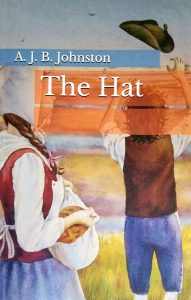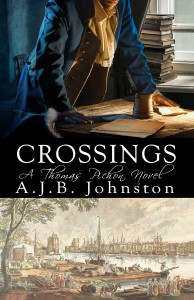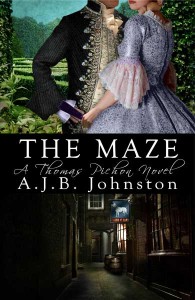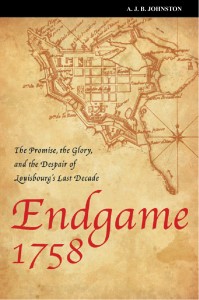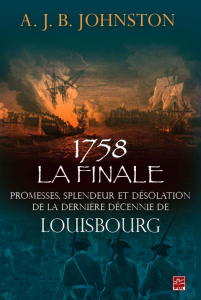Books
Ancient Land, New Land: Skmaqn — Port-la-Joye — Fort Amherst National Historic Site of Canada
The Mi’kmaq have inhabited Epekwitk (Prince Edward Island) for millennia. At this site, known in Mi’kmaq as Skmaqn, or “waiting place,” the Mi’kmaq met the French in the 18th century to renew their friendship and military alliance at a time when the French and British empires were fighting for supremacy in North America.
As Europeans settled on what had become to be known as Isle Saint Jean, the major European players were France and Great Britain, each of whom started constructing forts and sending soldiers, warships and settlers. A key strategy of the French was to establish a close alliance with the Mi’kmaq, one that was maintained by missionaries. Thus Skmaqn became the French fort Port-la-Joye. The French saw it as the most strategic location as its harbour was large, sheltered, and easy to defend because of the narrow entrance through which any enemy ships would have to pass.
One of the first permanent French settlements on the island, Port-la-Joye was the seat of colonial government and a port of entry. This site was surrendered to Great Britain in 1758 and renamed Fort Amherst, the British organized the deportation of more than 3,000 Acadians.
Purchase from:
Acorn Press Canada – Chapters Indigo – Amazon.ca
Kings of Friday Night – The Lincolns
Early 1960s Truro, Nova Scotia, was a town divided: East/West, Protestant/Catholic, Black/White. Only one thing brought everyone together: a Lincolns’ dance. Over a span of ten years, Truro’s legendary “kings of Friday night” played their trademark rock ‘n’ roll, R&B, and soul, not just in Truro but at dances and on campuses from Yarmouth to Sydney, Nova Scotia, and north to Sackville, Moncton, and Saint John, New Brunswick. In the process, The Lincolns changed the lives of small-town kids clamouring for a beat that would move their feet, their hips—and ultimately, their hearts.
Award-winning author A. J. B. Johnston brings personal recollections and nostalgic delight to the tale of Truro’s unforgettable rock stars. Through interviews and first-person stories, and featuring photos of the band’s evolution, The Lincolns will stir fond memories for the band’s countless loyal fans. Featuring a foreword by John MacLachlan Gray and an afterword by Frank MacKay.
Click here to watch the micro-documentary, “Kings of Friday Night: The Lincolns” (via YouTube).
Purchase from:
Amazon.ca or Chapters Indigo
Something True
We do not all grow up with a clear idea of who we might become. It usually takes life experiences to figure it out.
Katharine is the youngest child in a prominent family on Cape Breton Island at the turn of the 20th century. While her older siblings move easily into adult roles, Katharine does not. She is shy and unable to figure out what to do with her life. She wants something that feels “true” to her, but has no idea what that is. All she knows is that becoming someone’s wife—the most obvious choice in the early 1900s—holds no appeal.
Then come personal tragedies and the First World War. Katharine’s need to find something meaningful is magnified. She wants to go overseas to help the Allied troops, but her father refuses. Katharine has to find the inner strength to simply insist.
Something True is an inspiring, coming-of-age novel that puts the reader into late 19th- and early 20th-century Cape Breton Island and into France in the midst of the First World War.
Purchase from:
Amazon.com
The Hat
It’s a gusty August morning… two children spot sails on the horizon… foreign soldiers enter their village. This is how it begins for Marie and Charles, aged 14 and 10. Day by day, the sister and brother—and everyone else in the village—live with building suspense. They watch with bewilderment, then deepening concern, as men-at-arms from another land take over the local church and build a fort. What is going on? With each passing day, the complications and troubles mount. Everything in the village is upended. Charles and Marie are only kids, but they have to find ways to deal with the difficult situations in which they find themselves. They have to be wise and brave beyond their years. A J B Johnston holds the reader close to tell this moving tale. The main characters, Marie and Charles, are fictional, but the story is not. It is based on well-documented historical facts. The Hat presents a well-known event in a fresh way. It is a poignant, suspenseful novel about how two kids and a village deal with forces and events far beyond their control.
Purchase from:
Amazon.com
Crossings
Thomas Pichon seems forever at a crossroads, often choosing the path of least resistance, or at least the one most tempting. In this, the third Thomas Pichon novel, his life remains more complicated than he wishes. He encounters highwaymen on a country road, succumbs to a tempting tryst in the spa town of Bath, squanders a new love back in London and begins to long for the higher social station he once enjoyed.
Returning to Paris, his working life initially stalls, but a new lover offers help. He is given the best position he has ever had, one that requires him to go overseas. The crossing is a voyage neither he nor anyone else aboard will forget.
Purchase from:
Publisher |
Amazon.ca |
Chapters Indigo
Grand Pré
In 2012 the Landscape of Grand Pré, which includes the entire Grand Pré Marsh and portions of North Grand Pré, Hortonville, Grand Pré, and Lower Wolfville, was declared Nova Scotia’s third UNESCO World Heritage Site. This newest addition to the Stories of our Past series details the area’s physical and cultural evolution in an accessible, highly visual format.
Grand Pré explores the interrelationship of the peoples and landscape of Grand Pré, from the legacies of the dykelands to the record-breaking tides of the Minas Basin. With a focus on the resilient first peoples of Grand Pré—the Mi’kmaq and the Acadians—the book explores the implications of the Grand Dérangement, including the arrival of New England Planter and Scots settlers, the twentieth-century Acadian Renaissance, and the creation of the “Land of Evangeline.” Includes informative sidebars and 50 colour photos.
Purchase from:
Publisher |
Amazon.ca |
Chapters Indigo
The Maze
The second Thomas Pichon Novel picks up a few months after where Thomas, A Secret Life stops.
Thomas and Hélène are staying at a château in Brittany with Thomas’ aged wife, Marguerite. Thomas gets what he wants, but the getting turns his and Hélène’s lives upside down.
The twists and turns continue back in Paris after Thomas reconciles with Marguerite: ardor and deceit resume. The double life has its rewards until Hélène and Thomas are caught. A new beginning is required — in London where Thomas’ old friend Gallatin lives. On the journey and in the strange and bustling new city Thomas struggles to make sense of what has happened to his aspirations for success, and of what is happening with Hélène. He is fascinated by the English artists and writers he meets, yet his all his ambitions seem to be denied. To cap things off, Hélène finds a way out of life’s maze on her own, without him.
Reviews
The Maze is “full of literary surprises…” [the descriptions] “sing with flair and authenticity,” and Thomas Pichon’s life “provides fascinating material that is the stuff of great literature.” In conclusion: “Truly talented writers challenge themselves to break out of literary boundaries and to master other genres. When … the recognized expert on colonial Louisbourg branches out, it’s worth paying attention.”
– Paul Bennett for the Chronicle Herald
Read full review…
“… a thoroughly enjoyable novel.”
“Johnston has managed to improve the quality of the historical fiction genre by quite a margin.”
“Pichon is as real and developed a character as you will find anywhere … both believable and impressive.”
– Trevor Sawler in The Nashwaak Review (Vol. 32-33, 2014)
Read full review… (PDF file)
Purchase from: Amazon.ca
Ni’n na L’nu: The Mi’kmaq of Prince Edward Island
This lavishly-illustrated book tells a story through words and images that has never before been told, not in any single book. The focus is on the Mi’kmaq of PEI, an island which for thousands of years has been known to them as Epekwitk. The name means “cradle on the sea” and no more poetic description of PEI has ever been penned. The story of the Mi’kmaq is one of adaptation and perseverance across countless generations in the face of pervasive change. Despite all the shifts, today’s Mi’kmaq feel deeply connected to the land and to their ancestors and the values they still share.
The book won two prizes at the 2014 Atlantic Book Awards: “best Atlantic-published book” and the PEI Book Award for non-fiction.
While the book is a stand-alone publication, it is also a companion to a traveling exhibition of the same name. The exhibit is currently at the Canadian Museum of History in Gatineau, QC (across from Ottawa), until Jan. 18, 2015.
Purchase from: Amazon.ca
Louisbourg: Past, Present, Future
Now a national historic site, the fortified military settlement of Louisbourg was once a colonial jewel desired by both the French and English monarchies, traded with yet feared by the Anglo-Americans, and highly regarded by the Mi’kmaq. Home to Canada’s first lighthouse, Louisbourg became the capital of Île-Royale (Cape Breton Island) in 1720, and was an economically viable fishery, military stronghold, and strategic naval base for centuries.
In the newest addition to the Stories of our Past series, Louisbourg: Past, Present, and Future, historian A. J. B. Johnston explores the complex past of the Nova Scotian landmark in an accessible and animated format. Featuring over 50 images, including maps, archaeological excavations, and artistic renderings, Louisbourg illustrates a significant period in Nova Scotia history.
Reviews
Beautifully written and profusely illustrated, this little book will definitely encourage you to include a visit to the National Historic Site in your summer holiday plans. […] Johnston’s delightful narrative thread brings the colonial past alive and is accompanied by over 50 images, including exquisite maps, archeological excavations and colourful artistic renderings.
– Paul W. Bennett, July 13th, 2013 for the Chronicle Herald
Read full review…
Like any experienced historian who realizes that history doesn’t take place in a vacuum, Johnston discusses the strategic importance of English Harbour, the narrow entrance to Louisbourg, prior to its construction by the French circa 1713.
– Amherst Daily News, June 14th, 2013
Read full review…
Purchase from:
Publisher |
Amazon.ca |
Kobo Store
Thomas, A Secret Life
This is first of a series of Thomas Pichon Novels. They explore ambition, longing and betrayal against the backdrop of a gritty, sensuous 18th-century world.
In this opening novel we meet the central character at twelve years old, slowly coming of age in a small town in Normandy, France. In a series of adventures, Thomas discovers who he is. At fifteen, he rejects his parents’ insistence he become a priest. Instead, he steals away to Paris. En route he meets Hélène, who will be a force in his life for years (and in two novels) to come. Life is far from easy in Paris, yet Thomas does not give up. A marriage to an elderly widow definitely helps, but then back into his life comes Hélène. Thomas seeks to have his cake and eat it too, but he finds that is easier said than done.
Johnston deftly presents an unrepentant, unsavoury and unreliable [character] in an even-handed manner. … [He’s] a natural to write this story.
– Atlantic Books Today, Fall 2012
This is a fine novel, one that strikes just the right balance between fact and fiction… Johnston has without a doubt changed my opinion of historical fiction.
– The Antigonish Review (Trevor Sawler)
Amazon.ca + Kindle Edition |
Kobo Store |
Apple iTunes |
Amazon.com (US)
Endgame 1758
The story of what happened at the colonial fortified town of Louisbourg between 1749 and 1758 is one of the great dramas of the history of Canada, indeed North America. The French stronghold on Cape Breton Island, strategically situated near the entrance to the Gulf of St. Lawrence, was from soon after its founding a major possession in the quest for empire. The dramatic military and social history of this short-lived and significant fortress, seaport, and community, and the citizens who made it their home, are woven together in A. J. B. Johnston’s gripping biography of the colony’s final decade, presented from both French and British perspectives.
Endgame 1758 is a tale of two empires in collision on the shores of mid-eighteenth-century Atlantic Canada, where rival European visions of predominance clashed headlong with each other and with the region’s Aboriginal peoples. The magnitude of the struggle and of its uncertain outcome colored the lives of Louisbourg’s inhabitants and the nearly thirty thousand combatants arrayed against it. The entire history comes to life in a tale of what turned out to be the first major British victory in the Seven Years’ War. How and why the French colony ended the way it did, not just in June and July 1758, but over the decade that preceded the siege, is a little-known and compelling story.
Praise
For Johnston, a longtime historian with Parks Canada, Endgame 1758 is a fitting capstone to a career devoted to French colonial Louisbourg, and of all the author’s books the one most obviously written with a cross-over audience in mind. The prose is often appropriately dramatic, and colourful individuals and narrative drive play a greater role than in Johnston’s earlier work, which of necessity is more quantitative and analytical in nature.
—Philip Girard, Literary Review of Canada
Based on exhaustive and meticulous research in French, British and British and French colonial records, [Endgame 1758] successfully places the events leading to the fall of Louisbourg within the mid-18th-century Atlantic world. Johnston uses his well-sustained chess metaphor to carefully reconstruct the movement of opposing fleets, military strategies and engagements that form the central focus of the monograph… While offering a wealth of rich detail about the naval and military engagements that led to the final defeat of Louisbourg as well as the social and commercial aspects of life in the fortified town, it is a highly readable book.
— Canadian Historical Association
No scholar could be better qualified to recount the final years of France’s great North American fortress and naval base than A. J. B. Johnston… Johnston’s research is exhaustive and impeccably grounded in French and British primary sources; his prose is lucid; his interpretations are modest, plausible, and humane. His account of Louisbourg’s fall will remain the standard narrative for a long, long time.
— Fred Anderson, American Historical Review
Purchase from:
Publisher |
Amazon.ca + Kindle Edition
1758 La Finale
Le récit des événements survenus dans la ville coloniale fortifiée de Louisbourg entre 1749 et 1758 est l’un des plus grands drames de l’histoire du Canada et, en réalité, de celle de l’Amérique du Nord. La forteresse française bâtie dans l’île du Cap-Breton, située en un lieu stratégique proche de l’entrée du golfe du Saint-Laurent, est peu après sa fondation une possession d’envergure dans la quête d’un empire. Dans cette biographie poignante de la dernière décennie de la colonie, présentée autant du point de vue des Français que de celui des Britanniques par A. J. B. Johnston, s’entremêlent l’histoire militaire et sociale dramatique de cette forteresse, ce port de mer et cette communauté d’envergure mais à la vie éphémère et celle des citoyens qui y trouvèrent leur chez-soi.
1758 : la finale est le récit du choc entre deux empires sur les rives du Canada atlantique au milieu du XVIIIe siècle, alors que des visions européennes de prédominance rivale se heurtent mutuellement et avec celle des peuples autochtones de la région. L’ampleur de la lutte et son issue incertaine colorent l’existence des habitants de Louisbourg et des près de trente mille combattants déployés contre elle. L’histoire complète prend vie sous la forme d’un récit qui se révélera être celui de la première grande victoire britannique de la guerre de Sept Ans. Comment et pourquoi la colonie française a connu cette issue, pas uniquement en juin et juillet 1758 mais au long de la décennie qui a précédé le siège, est une histoire peu connue mais passionnante.
1758 : la finale est l’ouvrage le plus important consacré à Louisbourg par l’historien le mieux placé pour le faire. Voilà une contribution remarquable au domaine des études coloniales et une superbe histoire militaire. C’est un ouvrage exceptionnel.
– William Newbigging, professeur agrégé d’histoire et directeur du Département d’histoire à l’Algoma College University
Storied Shores
Cape Breton Island has many claims to fame, yet far too few people are familiar with the rich and storied past of the coastal areas of Richmond County.
For centuries the Mi’kmaq, and later the early European explorers and settlers, shortened their journeys between the Bras d’Or lake and the Atlantic Ocean by means of the narrow isthmus at St. Peter’s. This portage area—eventually a canal—became a haul-over road in the mid-1650s. The portage area and the surrounding shores and waterways of Cape Breton were sites of early and prolonged interaction between the French and the Mi’kmaq during a time when dreams of expansion and empire among European nations, met head on with the realities of North America’s aboriginal peoples.
The busy corridor between Chapel Island, St. Peter’s, and Isle Madame was the backdrop for a colourful and intriguing era of our shared histories. Storied Shores presents a history of that time and place—the story of the promise of prosperity and the hope for new lives and the story of the ravages of greed, rivalry, and war.
Purchase from: Amazon.ca







